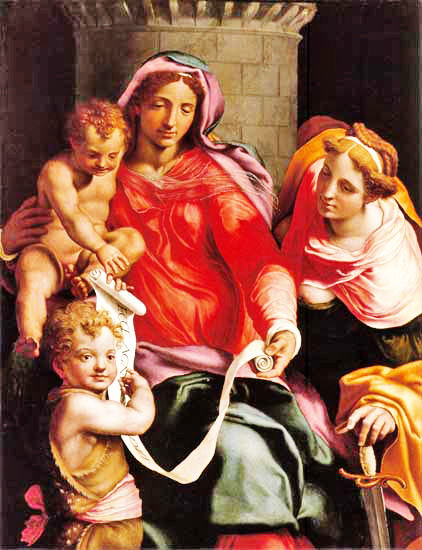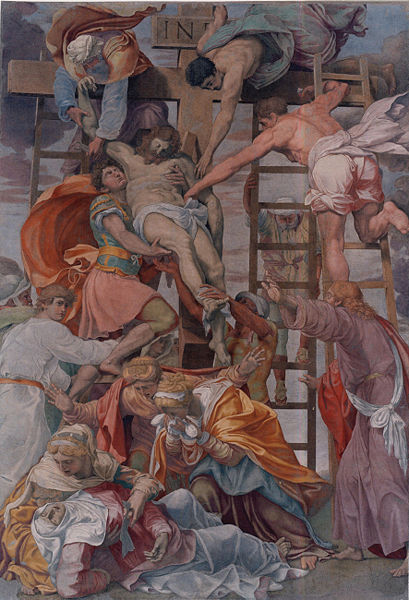Daniele da Volterra (1509-1566)
Get a Daniele da Volterra (1509-1566) Certificate of Authenticity for your painting (COA) for your Daniele da Volterra (1509-1566) drawing.
For all your Daniele da Volterra (1509-1566) artworks you need a Certificate of Authenticity (COA) in order to sell, to insure or to donate for a tax deduction.
Getting a Daniele da Volterra (1509-1566) Certificate of Authenticity (COA) is easy. Just send us photos and dimensions and tell us what you know about the origin or history of your Daniele da Volterra (1509-1566) painting or drawing.
If you want to sell your Daniele da Volterra (1509-1566) painting or drawing use our selling services. We offer Daniele da Volterra (1509-1566) selling help, selling advice, private treaty sales and full brokerage.
We have been authenticating Daniele da Volterra (1509-1566) and issuing certificates of authenticity since 2002. We are recognized Daniele da Volterra (1509-1566) experts and Daniele da Volterra (1509-1566) certified appraisers. We issue COAs and appraisals for all Daniele da Volterra (1509-1566) artworks.
Our Daniele da Volterra (1509-1566) paintings and drawings authentications are accepted and respected worldwide.
Each COA is backed by in-depth research and analysis authentication reports.
The Daniele da Volterra (1509-1566) certificates of authenticity we issue are based on solid, reliable and fully referenced art investigations, authentication research, analytical work and forensic studies.
We are available to examine your Daniele da Volterra (1509-1566) painting or drawing anywhere in the world.
You will generally receive your certificates of authenticity and authentication report within two weeks. Some complicated cases with difficult to research Daniele da Volterra (1509-1566) paintings or drawings take longer.
Our clients include Daniele da Volterra (1509-1566) collectors, investors, tax authorities, insurance adjusters, appraisers, valuers, auctioneers, Federal agencies and many law firms.
We perform Daniele da Volterra art authentication, appraisal, certificates of authenticity (COA), analysis, research, scientific tests, full art authentications. We will help you sell your Daniele da Volterra or we will sell it for you.

Daniele Ricciarelli, better known as Daniele da Volterra, was an Italian mannerist painter and sculptor. He is best remembered for his association, for better or worse, with the late Michelangelo. Several of Daniele’s most important works were based on designs made for that purpose by Michelangelo. After Michelangelo’s death Daniele was hired to cover the genitals in his Last Judgment with vestments and loincloths. This earned him the nickname “Il Braghettone” (“the breeches maker”).

Daniele Ricciarelli was born in Volterra (in today’s Lazio). As a boy, he initially studied with the Sienese artists Il Sodoma and Baldassare Peruzzi, but he was not well received and left. He appears to have accompanied the latter to Rome in 1535, and helped paint the frescoes in the Palazzo Massimo alle Colonne. He then became an apprentice to Perin del Vaga.

From 1538 to 1541 he helped Perin with the painting of frescoes in the villa of Cardinal Trivulvives at Salone, in the Massimi chapel in Trinità dei Monti, and the chapel of the crucifixion in San Marcello al Corso. He was commissioned the painting of a frieze in the main salon of the Palazzo Massimo alle Colonne, with the life of Fabius Maximus.

In Rome he also started working in the circle of Michelangelo and befriended him. Michelangelo used his influence with Pope Paul III to secure Daniele commissions and the post of superintendent of the works of the Vatican, a position he retained until the Pope’s death. Michelangelo provided him with sketches on which Daniele based some of his paintings, especially his series of frescoes in the Orsini chapel in the Trinità dei Monti, the commission for which Daniele had received in December of 1541.
Later Daniele was commissioned by Paul III to complete the decoration of the Sala Regia. On the death of the pope in 1549 he lost his position as superintendent and the pension to which it entitled him. He then devoted himself chiefly to sculpture.He died in Rome, 1566. According to Daniele’s will, the marble knee of the missing left leg of the Christ from Michelangelo’s Deposition was in his possession at the time of his death.

Daniele’s best-known painting is the Descent from the Cross in the Trinità dei Monti (circa 1545), after drawings by Michelangelo; by an excess of praise this work was at one time grouped with Raphael’s Transfiguration and the Last Communion of St. Jerome by Domenichino as the most famous pictures in Rome. Daniele’s two-sided painting of David killing Goliath (c. 1555) in the Louvre too seems to have been based on Michelangelo’s designs; for a long time it was attributed to him.

Other notable works include the Massacre of the Innocents (1557) in the Uffizi Gallery, Florence, a portrait he drew of Michelangelo and a bust he made from Michelangelo’s death mask.

A well-known sculpture is the Cleopatra in the Belvedere. From France Daniele received the commission to make a bronze equestrian statue of Henry II, but he finished only the horse; this was later used for a statue of Louis XIII at the Place Royale and melted down during the French Revolution.

He also chiseled away a part of the fresco and repainted the larger part of Saint Catherine and the entire figure of Saint Blaise behind her. This was done because in the original version Blaise had appeared to look at Catherine’s naked behind, and because to some observers the position of their bodies suggested sexual intercourse.

Reviews
1,217 global ratings
5 Star
4 Star
3 Star
2 Star
1 Star
Your evaluation is very important to us. Thank you.
